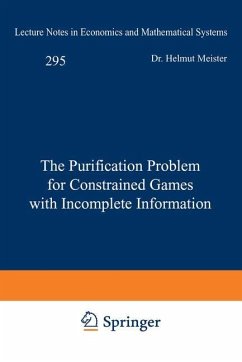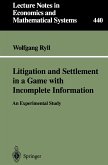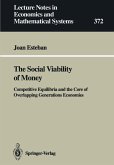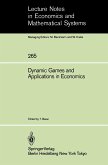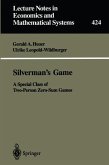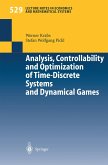The brain's three sensory circumventricular organs, the subfornical organ, organum vasculosum of the lamina terminalis and the area postrema lack a blood brain barrier and are the only regions in the brain in which neurons are exposed to the chemical environment of the systemic circulation. Therefore they are ideally placed to monitor the changes in osmotic, ionic and hormonal composition of the blood. This book describes their - General structure and relationship to the cerebral ventricles - Regional subdivisions - Vasculature and barrier properties - Neurons, glia and ependymal cells - Receptors, neurotransmitters, neuropeptides and enzymes - Neuroanatomical connections - Functions.
The approach presented in this book combines two aspects of generalizations of the noncooperative game as developed by Nash. First, players choose their acts dependent on certain information variables, and second there are constraints on the sets of decisions for players. After the derivation of a general (Nash)equilibrium existence theorem, some results from purification theory are used to prove the existence of an approximate equilibrium in pure strategies, that is in nonrandomized decision functions. For some types of payoff-functions and constraints, these games prove to have an (exact) equilibrium in pure strategies. The reason for considering constrained games with incomplete information is that, apart from their game-theoretic importance, they have rather widespread application. Market games with a continuum of traders as well as some statistical decision problems are covered with this approach.
The approach presented in this book combines two aspects of generalizations of the noncooperative game as developed by Nash. First, players choose their acts dependent on certain information variables, and second there are constraints on the sets of decisions for players. After the derivation of a general (Nash)equilibrium existence theorem, some results from purification theory are used to prove the existence of an approximate equilibrium in pure strategies, that is in nonrandomized decision functions. For some types of payoff-functions and constraints, these games prove to have an (exact) equilibrium in pure strategies. The reason for considering constrained games with incomplete information is that, apart from their game-theoretic importance, they have rather widespread application. Market games with a continuum of traders as well as some statistical decision problems are covered with this approach.

